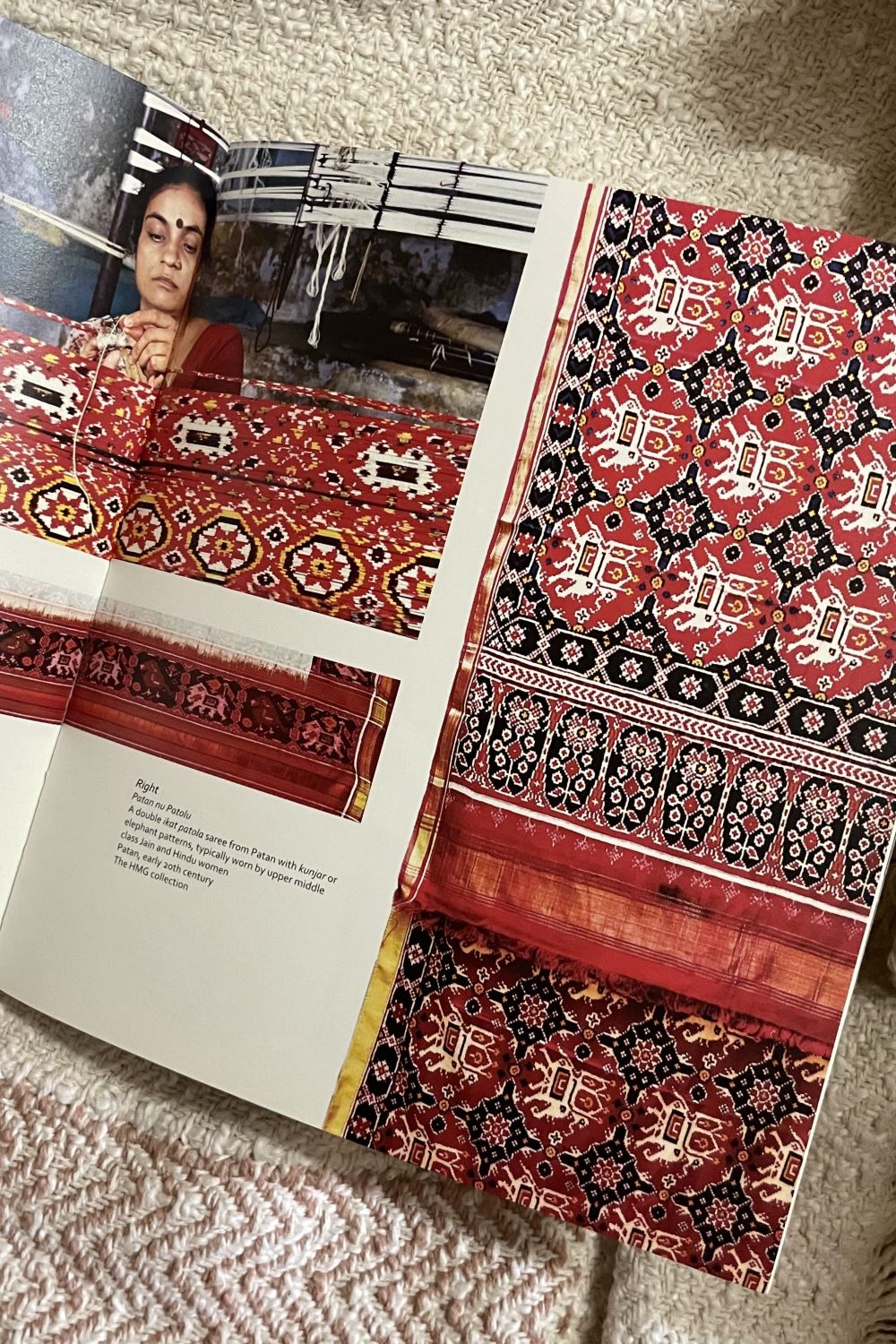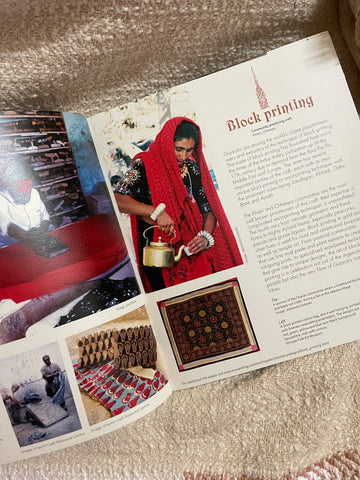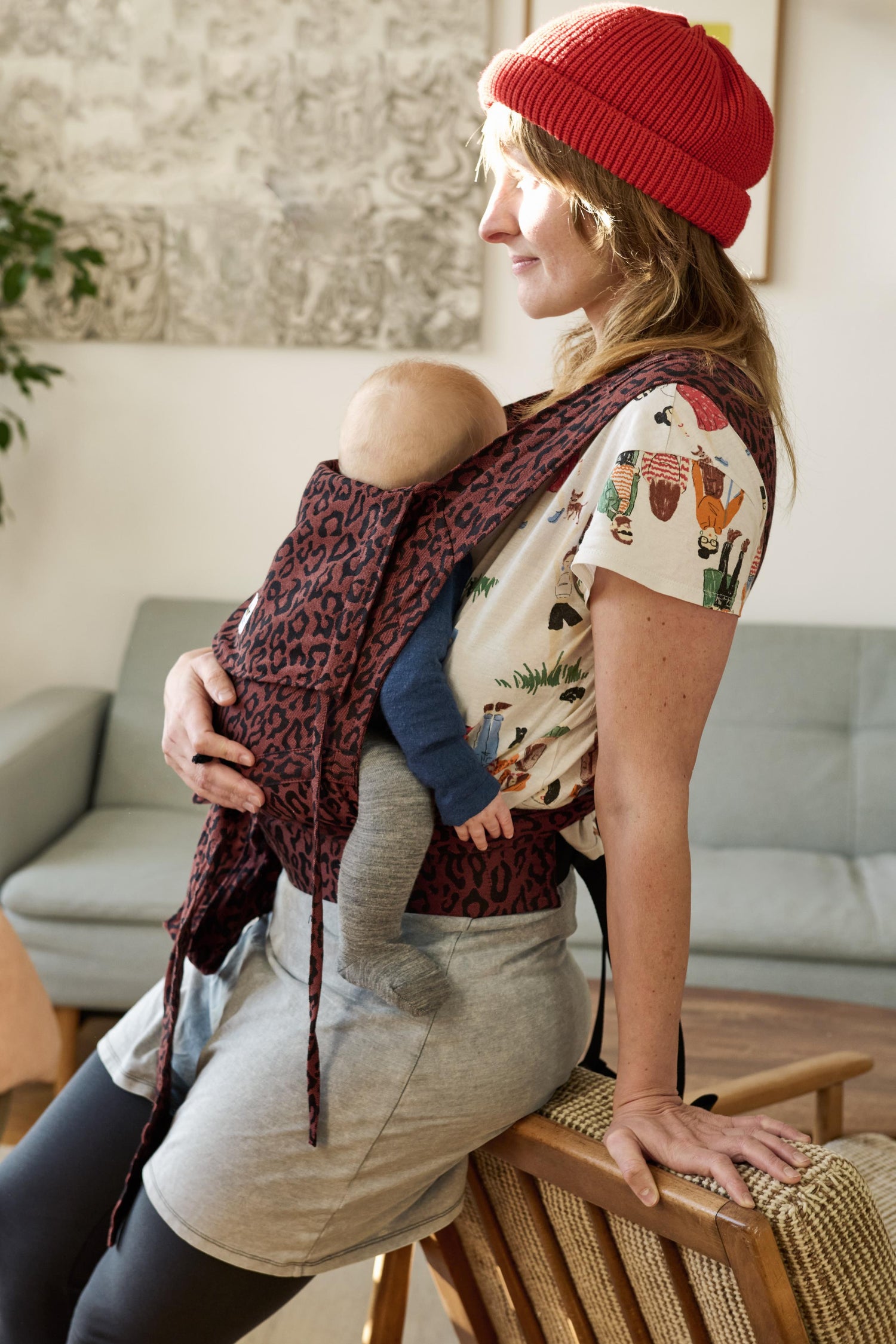
Indian Textile Art in Ahmedabad
Ahmedabad - city in western India. State of Gujarat. The old town is a UNESCO World Heritage Site. The center of life for an estimated 7.2 million people. Also known in India as an important trading city for textiles. Cotton in particular is processed here - also for Mama Nuka. Mama Nuka baby carriers and slings are woven in a small production facility in Ahmedabad and dyed exclusively with natural resources.
That's why we - Sophie and Sarah - are here as interns as part of the ASA program and are discovering the colorful side of India. We are involved in cotton processing, learning about Indian textile art and, quite casually, discovering a part of the world that has remained closed to us until now.

The textile industry is one of the most important industries in Ahmedabad. Although it was only really established in the 19th century under the British crown, textiles have played a role in the city for much longer. They were a commodity, but also a distinguishing feature for the various groups that have long been at home in the state of Gujarat or have passed through the city on their travels. It is therefore no wonder that the city has its own Textile Research Association and we can visit two exhibitions on the subject here:
-
The Calico Museum of Textiles
An exhibition and institution dedicated to the preservation, research and display of India's rich textile heritage. Founded in 1949, it is one of the most prestigious textile museums in the world. The museum's extensive collection presents a diverse selection of textiles spanning centuries and regions, from exquisite saris and embroidery to intricate tapestries and traditional clothing. Visitors here take a visual journey through India's complex and vibrant textile traditions, with each exhibition offering insights into the country's cultural, historical and artistic diversity. Important: Tickets must be booked in advance. The exhibition can only be viewed as part of a guided tour. -
The Ahmedabad Trunk Textile Gallery at House of MG
A remarkable exhibition dedicated to showcasing and studying the region's rich textile history. It is part of the historic House of MG hotel and offers visitors a glimpse into the traditional textile arts and crafts of Ahmedabad and Gujarat. The gallery houses an impressive collection of textiles, including sumptuous handwoven fabrics, intricately embroidered pieces and traditional clothing that reflect the rich cultural and artistic heritage of this region.
We visited both exhibitions on a sunny, hot day in Ahmedabad and were amazed by the artistry and beauty of the embroidery and textile paintings in both exhibitions! Unfortunately, photos are not allowed here, so let us take you on a little journey.

We start the day quite early with a small breakfast and then head to the Calico Museum of Textiles. In true style, we explore the city by tuktuk or scooter. We travel by tuktuk and are happy about the little bit of wind as we travel - the temperature here is currently around 35°C.
When we arrive, we stand in front of a large gate that has a small door through which we can access the private grounds. We have to duck to get through, then hand over our phones and bags, but in doing so we enter a true oasis. The area around the museum is a park-like garden with tall palm trees, lots of greenery, peacocks strutting around, the climate is pleasant. Three other participants of our museum tour are waiting in front of the museum entrance. We are greeted by an older Indian woman in a magnificent sari, who leads us through the building and thus through the exhibition. We walk through staircases, various rooms, over colorfully tiled or marbled floors, look into the eyes of bronze statues, at the large, bright mosaic of the roof terrace, and are led from room to room.
The exhibition begins with textile painting. We see cotton and silk fabrics painted with impressive detail, some of which are decorated with gold leaf. The tapestries of various sizes depict the country's myths and legends. They tell of rulers, goddesses and gods. We notice that cows and elephants are often depicted. We then learn how different the embroidery of the various ethnic groups in Gujarat is. We learn about patterns and types of embroidery, then it's about textile printing. We move through rooms that give us instructions on how to embroider the patterns - if you can remember everything. We see the patterns embroidered on cotton, silk, leather, velvet; shells, mirrors, pearls, wool, silver and gold are used in them.
At the end of our tour we come to the garden. We sit under a gallery and listen to the rippling of the pond. It feels a bit like paradise here. A small oasis in the middle of the city of Ahmedabad, which has a population of one million. Before we are sent back to the exit, we naturally go through the museum shop (which is fortunately small here) and are given peanuts and chai as we leave. Then we go back through the small wooden door in the large gate and back into the reality of the city.
The next destination on our tour of Ahmedabad's textile heritage is something edible. We stop at Lucky's Restaurant. Here they have the best mango lassi yet, even better sandwiches and the famous Lucky's Maska Bun. We are in love with this culinary highlight and, well fortified, we walk across the street to the House of MG.
Actually a hotel, this magnificent building not only houses two small shops and a recommendable café, but also the Ahmedabad Trunk Gallery. Here, carefully selected pieces from the owners' private collection and collection are displayed.
You can see beautiful saris and kurtas, saddlebags, carpets, colors, embroidery, patterns and beads. Everything shines and sparkles. Here we learn about the patterns and techniques of the various ethnic groups in Gujarat - with the materials or patterns used, each group has its own identifying features, which are impressively presented in the collection. For example, we learn about the clothing of the Jats, which is characterized by extraordinary embroidery. In this embroidery you can not only recognize the origin of the wearer, but also information about age and marital status.

But just see for yourself! A visit to this gallery is a journey into the fascinating world of Gujarat textiles and a must for anyone interested in the art and craftsmanship of the region.
More information on the respective websites: Calico Museum of Textiles & Ahmedabad Trunk Textile Gallery





